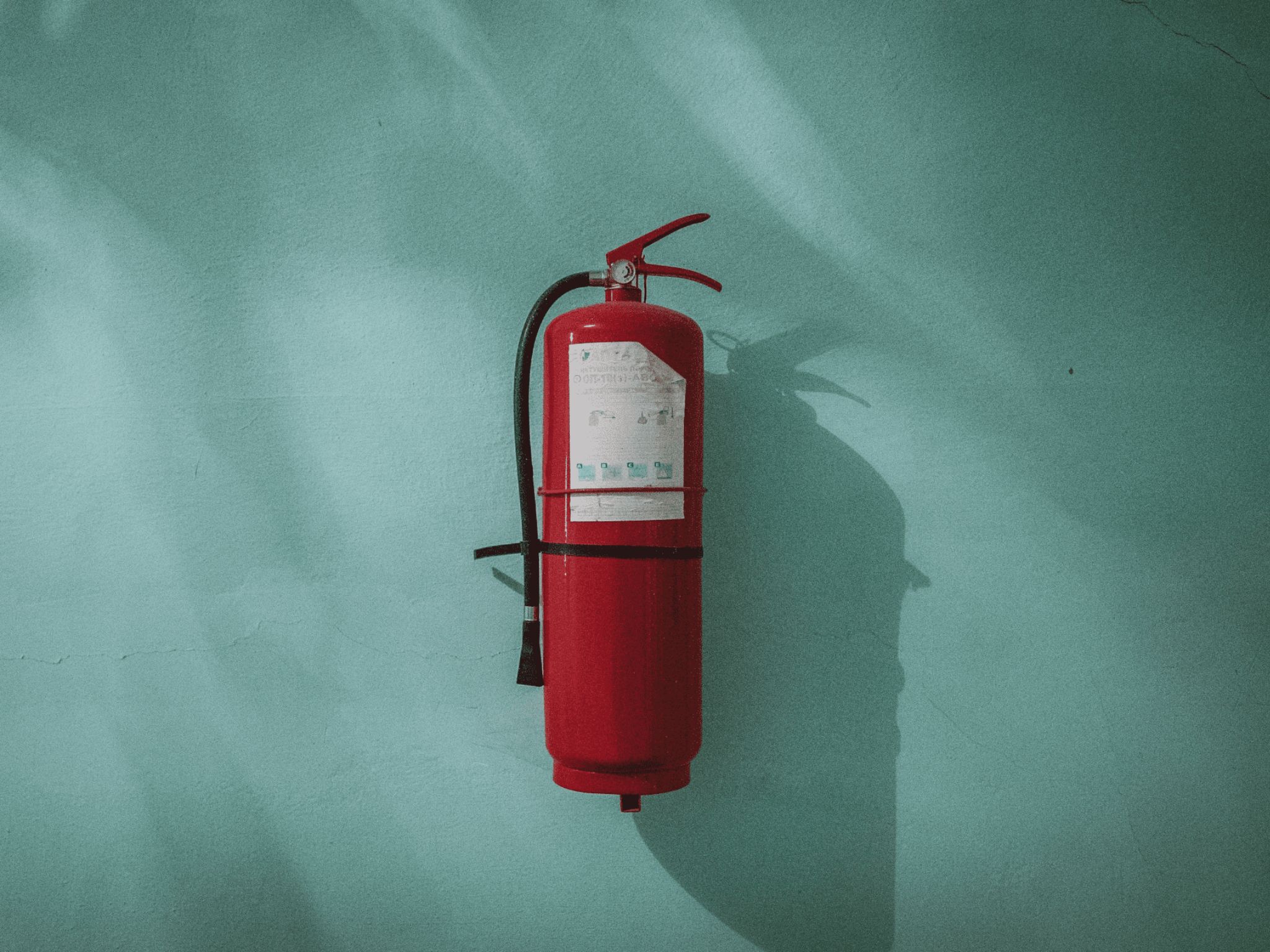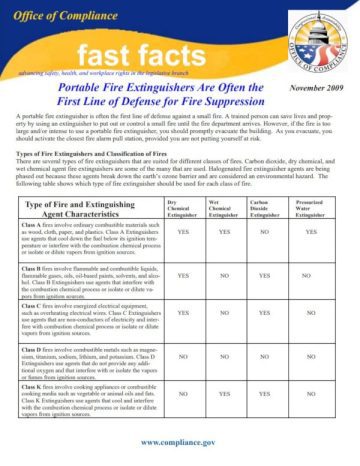A portable fire extinguisher is often the first line of defense against a small fire. A trained person can save lives and property by using an extinguisher to put out or control a small fire until the fire department arrives. However, if the fire is too large and/or intense to use a portable fire extinguisher, you should promptly evacuate the building. As you evacuate, you should activate the closest fire alarm pull station, provided you are not putting yourself at risk.
Types of Fire Extinguishers and Classification of Fires
There are several types of fire extinguishers that are suited for different classes of fires. Carbon dioxide, dry chemical, and wet chemical agent fire extinguishers are some of the many that are used. Halogenated fire extinguisher agents are being phased out because these agents break down the earth’s ozone barrier and are considered an environmental hazard. The following table shows which type of fire extinguisher should be used for each class of fire.
| Type of Fire and Extinguishing Agent Characteristics | Dry Chemical Extinguisher | Wet Chemical Extinguisher | Carbon Dioxide Extinguisher | Pressurized Water Extinguisher |
| Class A fires involve ordinary combustible materials such as wood, cloth, paper, and plastics. Class A Extinguishers use agents that cool down the fuel below its ignition temperature or interfere with the combustion chemical process or isolate or dilute vapors from ignition sources. | YES | YES | NO | YES |
| Class B fires involve flammable and combustible liquids, flammable gases, oils, oil-based paints, solvents, and alcohol. Class B Extinguishers use agents that interfere with the combustion chemical process or isolate or dilute vapors from ignition sources. | YES | NO | YES | NO |
| Class C fires involve energized electrical equipment, such as overheating electrical wires. Class C Extinguishers use agents that are non-conductors of electricity and interfere with combustion chemical process or isolate or dilute vapors from ignition sources. | YES | NO | YES | NO |
| Class D fires involve combustible metals such as magnesium, titanium, sodium, lithium, and potassium. Class D Extinguishers use agents that do not provide any additional oxygen and that interfere with or isolate the vapors or fumes from ignition sources. | NO | NO | NO | NO |
| Class K fires involve cooking appliances or combustible cooking media such as vegetable or animal oils and fats. Class K Extinguishers use agents that cool and interfere with the combustion chemical process or isolate or dilute vapors from ignition sources. | NO | YES | YES | NO |

